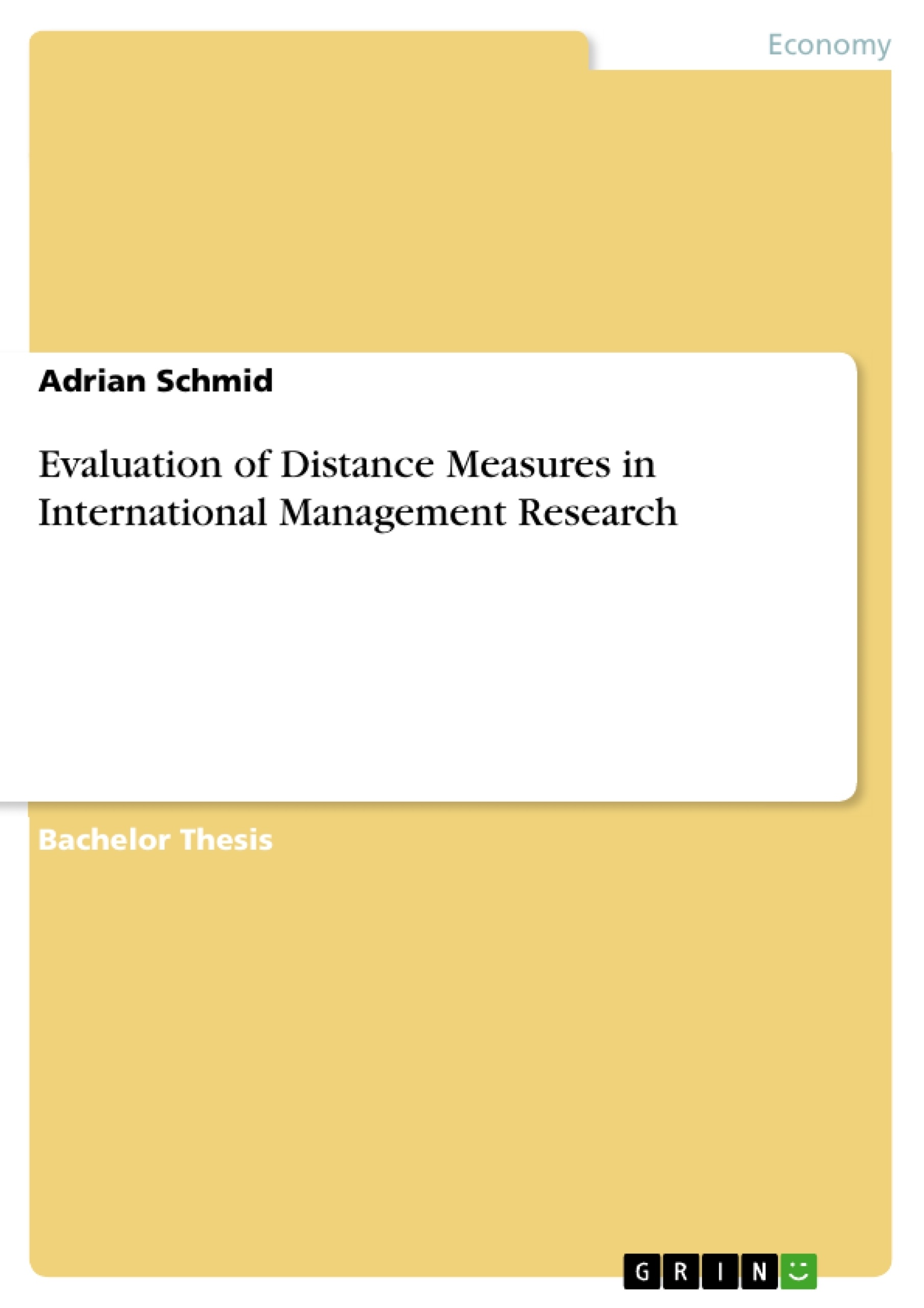This paper’s purpose is to give an overview of how distance in management research is measured and to overview the strong critique the corresponding measures have to face. The paper’s investigation brought several findings: firstly that frameworks in which distance constructs develop are too wide in their definition and that these frameworks are insufficiently connected to each other what impedes the improvement of the strong criticised but in management research essential constructs. Secondly the paper illustrates the widespread disagreement among researchers and literature. The paper gives suggestions how distance measures could be improved and contributes to a more "outside of the box thinking" by considering the whole distance construct. Furthermore it helps to build unbiased opinions of the thematic by not taking a side or giving suggestions whether on construct is superior towards another.
Due to rising internationalization of businesses and the circumstance of having business partners, suppliers and clients placed all around the world, companies are fronting challenges like diversities in lifestyles, languages, cultural values and norms, consumer preferences and buying power. So it is not surprising that these differences or distances became an increasingly important topic in international management research. Distance aspects are important for companies in evaluating and improving their international strategies in nearly every field of business, especially when it comes to expansions in foreign investments through direct investments, international transactions and joint ventures.
In purpose to be able to identify the extent of difference between countries, that Hymer called "liability of foreignness", management scholars evolved a broad range of quantitative and qualitative distance measures based on different assumptions and methods. But although the concepts play an important role in international management research and although they are widely used in international business practice to support or to improve companies’ decision-making process, they face strong criticism and contradiction.
Inhaltsverzeichnis (Table of Contents)
- 0. Abstract
- 1. Introduction
- 2. Most Common Concepts
- 2.1 Cultural Distance
- 2.1.1 Cultural Indices and Hofstede's Cultural Dimensions
- 2.1.2 Shalom Schwartz's Framework of Cultural Dimensions
- 2.1.3 Ghemawat's Managerial-Based Framework
- 2.1.4 Cultural Clusters
- 2.2 Institutional Distance
- 2.3 Psychic Distance
- 2.4 Linguistic Distance
- 2.1 Cultural Distance
- 3. Critical Review of Common Distance Concepts
- 3.1 Critical Review of Cultural Distance
- 3.2 Critical Review of Institutional Distance
- 3.3 Critical Review of Psychic Distance
- 3.4 Critical Review of Linguistic Distance
- 4. Discussion and Limitations
- 5. Executive Summary
Zielsetzung und Themenschwerpunkte (Objectives and Key Themes)
This paper aims to provide a comprehensive overview of how distance is measured in management research, and to highlight the criticisms leveled against these measures. It examines the various frameworks used to define and quantify distance constructs, analyzing their strengths and weaknesses. The paper also explores the widespread disagreement among researchers regarding the efficacy of these measures.
- Distance concepts in international management research
- Critical analysis of distance measures
- The limitations of existing distance frameworks
- Potential improvements and future research directions
- The impact of distance on international business strategies
Zusammenfassung der Kapitel (Chapter Summaries)
Chapter 1 introduces the significance of distance in international management research, emphasizing its relevance in navigating the complexities of globalization and the challenges companies face in operating across diverse cultures and institutions. It outlines the purpose and scope of the paper, highlighting the focus on cultural, institutional, psychic, and linguistic distance. Chapter 2 delves into the most commonly used distance concepts, offering a detailed exploration of each construct, including its theoretical underpinnings and practical applications. The chapter examines various frameworks for measuring cultural distance, including Hofstede's Cultural Dimensions, Schwartz's Framework of Cultural Dimensions, Ghemawat's Managerial-Based Framework, and the concept of cultural clusters. The chapter also discusses the concept of institutional distance, exploring the regulatory, cognitive, and normative institutions that influence business operations. Finally, it introduces the concepts of psychic and linguistic distance, outlining their relevance in international management research.
Schlüsselwörter (Keywords)
The key terms and concepts explored in this paper include cultural distance, institutional distance, psychic distance, linguistic distance, international management, globalization, foreign direct investment, business strategies, cultural dimensions, cultural clusters, and the liability of foreignness. This paper examines the use of these constructs in research and practice, highlighting their significance in understanding and navigating the complexities of operating in international business environments.
- Citar trabajo
- Adrian Schmid (Autor), 2013, Evaluation of Distance Measures in International Management Research, Múnich, GRIN Verlag, https://www.grin.com/document/494285



